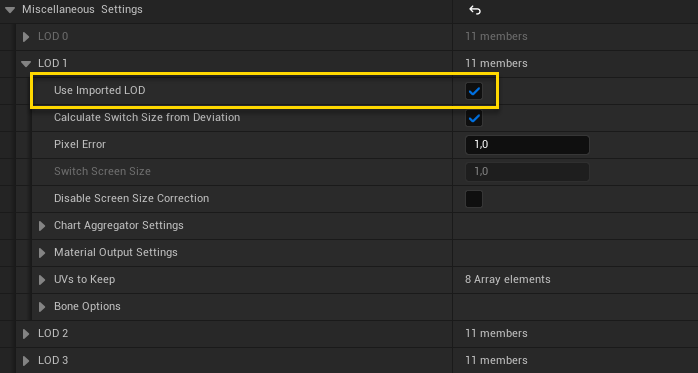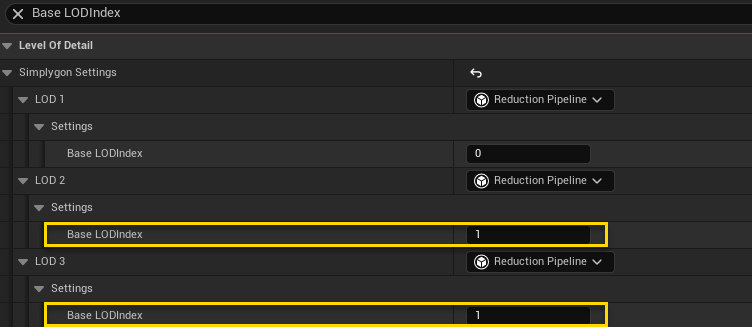LOD Recipe: Use existing source LOD
Use LOD Recipe to create a LOD chain using an existing LOD as source instead of using the default LOD 0. An existing source LOD could be an imported LOD.
Prerequisites:
- A Skeletal or Static mesh which contains a source LOD.
- A LOD Recipe containing at least one Skeletal Mesh and/or a Static Mesh.
WARNING
A generated LOD using the built-in reduction interface is not considered a source LOD
1. Enable Use Imported LOD
In the LOD Recipe, go to Miscellaneous Settings → LOD 1 and enable Use Imported LOD. This is to avoid the LOD to be overwritten during processing and instead preserve the existing source LOD.

2. Set Base LOD index
Next step is to make sure the LOD chain is using LOD 1 as the base when generating LODs. For the rest of the LODs in the LOD Recipe, set Base LOD index to 1.

3. (Optional) Adjust settings
In this example we have adjusted these settings:
- LOD 2 (Reduction Pipeline)
- Triangle Ratio: 0.5
- LOD 3 (Reduction Pipeline)
- Triangle Ratio: 0.25
4. Build
Once you're done setting all the LOD Recipe settings, press build and wait for the process to complete.
5. Result
Figure 3 shows the outcome of reusing an existing source LOD (LOD 1) as the base for generating the rest of the LOD chain. By setting LOD 1 as the source LOD, it is preserved and not overwritten during processing. LOD 1 becomes the starting point for subsequent LODs (LOD 2 and LOD 3), ensuring the original imported LOD remains intact and is used as the foundation for further optimizations.

